PIONEERING PILOTS OF SWEETWATER

A TEXAN’S HISTORIC PLAY AT THE MASTERS
THE MOST OVERLOOKED BIG BEND VISTA

PIONEERING PILOTS OF SWEETWATER

A TEXAN’S HISTORIC PLAY AT THE MASTERS
THE MOST OVERLOOKED BIG BEND VISTA
Dragonflies and damselflies rule Texas skies with deadly grace





With WaterFurnace, the average Texan pays $53/mo. to provide heating, cooling and hot water for their home.
WaterFurnace homeowners across the country are reaping the benefits of geothermal heat pumps by utilizing the unlimited reservoir of stored solar energy underground. A WaterFurnace geothermal system taps into this free and renewable resource to provide savings of up to 70% on heating, cooling, and hot water—with a comfort you have to experience to believe. Right now you can save thousands on installation thanks to a 30% federal tax credit2. Contact our WaterFurnace Concierges Team to learn more today!
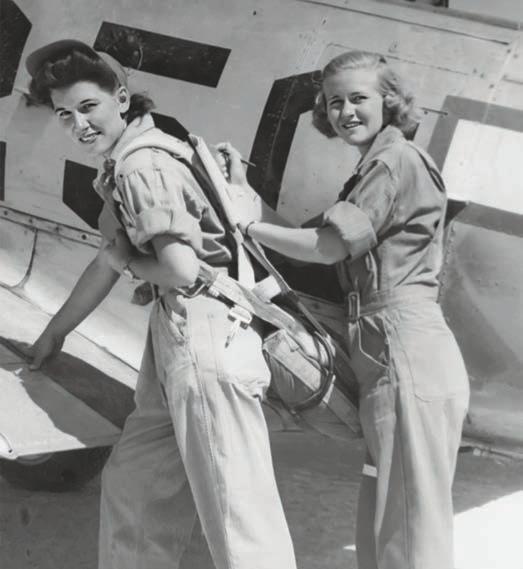
LeBlanc
By Sheryl Smith-Rodgers
Pam LeBlanc
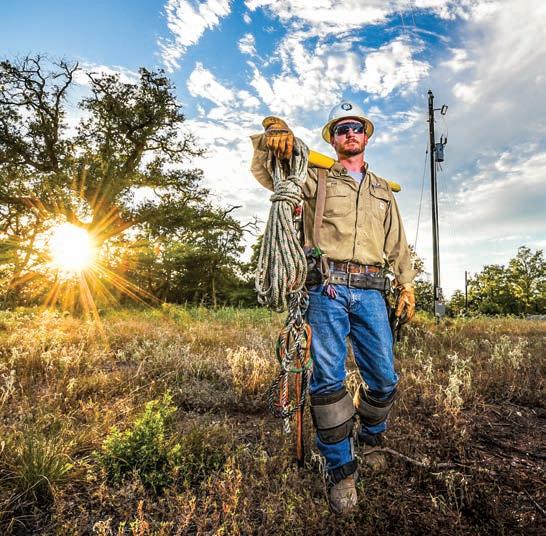
WILLIAM KAISER JOINS the rest of Co-op Country in saluting a special segment of the workforce April 14, National Lineworker Appreciation Day.
As a groundman in the late 1940s, Kaiser, 96, helped construct power lines in Central Texas for San Bernard Electric Cooperative.
He did so from the back of a Burma Jeep, unspooling line around Hallettsville, about halfway between San Antonio and Houston. Bringing electricity to rural Texas was backbreaking work in the years after co-ops got their start, and all these decades later, Kaiser is proud of his role.
“Somebody had to lay those lines out through the right-of-way so that they could hang the lines on the pole,” he says. “It takes a whole crew, many people, to get to where the lineman could do his job.”
A job, Kaiser notes, that wasn’t for him: “I’m not somebody who likes to get up in the air.”

A flower blossoms for its own joy.”
—OSCAR WILDE
best view in Texas is ...
Tell us how you would finish that sentence. Email your short responses to letters@TexasCoopPower.com or comment on our Facebook post. Include your co-op and town.
Here are some of the responses to our February prompt: My first car was ...
A 1953 Chevy with a nonworking reverse gear. Had to be creative in finding a place to park.
WANDA SIKES
TRINITY VALLEY EC TERRELL
Such a clunker that it was on my mechanic’s lift so much that it had more miles on it vertically than horizontally.
JOE POLINO TRI-COUNTY EC GRANBURY
A hearse! Specifically, a 1958 Cadillac coach by Miller-Meteor. My father wanted to make sure if I got in an accident, it would be the other guy who got hurt.
JAY WEBER
PEDERNALES EC ROUND ROCK
A used fluorescent yellow Ford Maverick. Living in a small town, my parents always knew where I was—no tracking/locator services needed!
PEGGY RUSTERHOLTZ
GRAYSON-COLLIN EC LUCAS
Visit our website to see more responses.

ENTER CONTESTS AT TEXASCOOPPOWER.COM
$500 RECIPE CONTEST
One-Skillet Dinners FOCUS ON TEXAS PHOTOS College Life RECOMMENDED READING
We sure love telling you about intriguing insects— as we did with The Bugs That Make You See Red in February 2019. Find it at TexasCoopPower.com.

Fun For All
I plan to send It’s Hip To Be a Square [February 2025] to some folks who may be shy about trying square dancing or round dancing.
Cheryl Rush
Upshur Rural EC
Winnsboro
It brought back so many memories of when my hubby and I had a blast square dancing for so many years. It was very challenging, and the friendship was incredible.
Genny Pruitt Nueces EC Victoria
Not Light Reading
I enjoyed Field of Beams [December 2024] so much that I had a tear in my eye when I finished.
Roberta McLaughlin
Heart of Texas EC Lorena

FEBRUARY 2025 It’s Hip To Be a Square
“I square danced for 20 years. Nothing better for exercise, enjoyment, friendships.”
DONNA DEAN HUTCHERSON VIA FACEBOOK
Around age 10 my friend and I were walking on a trail that ended at a dirt road. We saw a large black bear less than a football field away [Our Nosy New Neighbors, January 2025]. We cried and ran.
Then, my friend stopped running and started laughing. I turned around and saw the bear running away from us. There were many black bears in Minnesota. None of our bear meetings turned out bad for anyone other than our garbage cans. But I still don’t think people will like having that many bears in Texas.
Tyler Carlson Pedernales EC San Marcos
Thank you for the informative articles in February [Currents and History to a Tea] about the achievements and contributions of Black Americans in the U.S. and world. It is much appreciated.
Gabrielle Gordon Tri-County EC Tarrant County
Editor, Texas Co-op Power 1122 Colorado St., 24th Floor Austin, TX 78701
Please include your electric co-op and town. Letters may be edited for clarity and length.
Texas Co-op Power
TEXAS ELECTRIC COOPERATIVES
BOARD OF DIRECTORS
Chair Avan Irani, Robstown
Vice Chair Bryan Wood, San Augustine
Secretary-Treasurer Cameron Smallwood, Burleson
Board Members Dale Ancell, Lubbock Matt Bentke, Bastrop • Kerry Kelton, Navasota • Mark McClain, Roby
PRESIDENT/CEO Mike Williams, Austin
COMMUNICATIONS & MEMBER
SERVICES COMMITTEE
Mike Ables, Bellville • Kathi Calvert, Crockett
Marty Haught, Burleson • Tachi Hinojosa, Fredericksburg • Gary Miller, Bryan Zac Perkins, Hooker, Oklahoma • Bryan Story, Blossom • Buff Whitten, Eldorado
MAGAZINE STAFF
Vice President, Communications & Member Services Martin Bevins
Editor Chris Burrows
Associate Editor Tom Widlowski
Production Manager Karen Nejtek
Creative Manager Andy Doughty
Advertising Manager Elaine Sproull
Communications Specialist Samantha Bryant
Digital Media Specialist Caytlyn Calhoun
Senior Designer Stacy Coale
Assistant Production Manager Alex Dal Santo
Print Production Specialist Grace Fultz
Food Editor Vianney Rodriguez
Communications Specialist Erin Sinclair
Communications Specialist Claire Stevens
Communications Specialist Kelly Tran
Proofreader Louie Bond
TEXAS CO-OP POWER Volume 81, Number 10 (USPS 540-560). Texas Co-op Power is published monthly by Texas Electric Cooperatives. Periodical postage paid at Austin, TX, and at additional offices. TEC is the statewide association representing 76 electric cooperatives. Texas Co-op Power’s website is TexasCoopPower.com. Call (512) 4540311 or email editor@TexasCoopPower.com.
SUBSCRIPTIONS Subscription price is $5.11 per year for individual members of subscribing cooperatives and is paid from equity accruing to the member. If you are not a member of a subscribing cooperative, you can purchase an annual subscription at the nonmember rate of $7.50. Co-op members: Please notify your co-op of address changes or other subscription requests.
POSTMASTER Send address changes to Texas Co-op Power (USPS 540-560), 1122 Colorado St., 24th Floor, Austin, TX 78701. Please enclose label from this copy of Texas Co-op Power showing old address and key numbers.
ADVERTISING Contact Elaine Sproull at (512) 486-6251 or esproull@texas-ec.org for information about purchasing display ad space in Texas Co-op Power and/or in our 26 sister publications in other states. Advertisements in Texas Co-op Power are paid solicitations. The publisher neither endorses nor guarantees in any manner any product or company included in this publication.
COPYRIGHT All content © 2025 Texas Electric Cooperatives Inc. All rights reserved. Reproduction of this issue or any portion of it is expressly prohibited without written permission. Willie Wiredhand © 2025 National Rural Electric Cooperative Association.

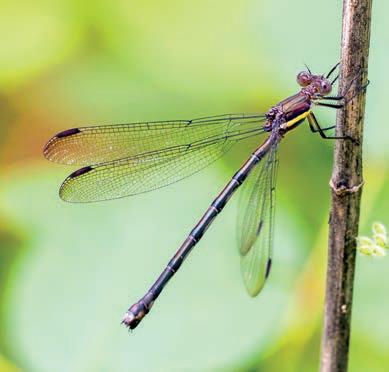


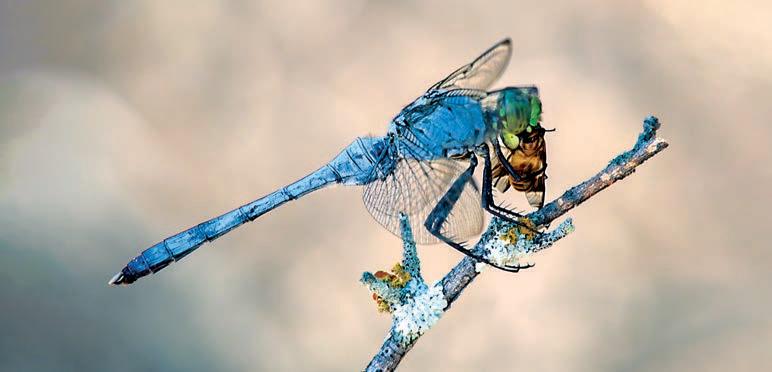
Texas’ diversity of colorful dragonflies and damselflies beguiles bird and butterfly watchers
BY SHERYL SMITH-RODGERS
n the grassy edge of a dry irrigation canal, an emerald green insect darted about in the air. Then it landed on the limb of a thorny mesquite.
Armed with a camera, amateur naturalist Tripp Davenport of Uvalde aimed his long lens at the dazzling dragonfly and quickly snapped photos before it flitted away.
That morning in July 2017, he had visited the National Butterfly Center in South Texas in hopes
CLOCKWISE FROM LEFT A female eastern pondhawk dragonfly; dragonflies and damselflies have compound eyes made up of thousands of tiny eyes called ommatidia. The eastern amberwing is one of the only dragonflies that mimics a wasp. The great spreadwing is one of the largest damselflies in North America, with a length up to 2.4 inches, a 3-inch wingspan and a notable yellow stripe. A male eastern pondhawk with its prey.
of spotting a red-mantled skimmer, a dragonfly from central Mexico that rarely ventures into Texas. Instead he found something even more special.
“When I looked at my images, I realized it was a dragonfly that I’d never seen before,” says Davenport, a high school teacher and Medina Electric Cooperative member. “And I’ve seen nearly all of them in Texas.”
Perplexed and excited, he called and texted pictures to some fellow naturalists. One beelined to Davenport’s location. Another researched records and nailed down the species. “It was a secretive darner that had only been photographed twice before, in central Mexico,” Davenport says. “My adrenaline was running!”
When you’re a dragonfly chaser, that’s what can happen. Like avid bird watchers, many chasers keep life lists of every species they’ve seen. Similarly, they may travel long distances in pursuit of dragonflies. Damselflies, too. The closely related insects, which have two pairs of long wings, elongated bodies and large compound eyes, are listed in the taxonomic group Odonata (derived from odont, a Greek root word for “tooth” that refers to their large chewing mandibles). Luckily for Texans, our state is home to hundreds of species.
Odonates (chasers call them “odes”) can typically be found near water but not exclusively. Their bodies come in a rainbow of hues—red, orange, yellow, green, blue and purple along with black and white. They can alternately beat and rotate their four membranous wings, enabling them to zip in all directions and even backward.
Using their aerial agility, odes hunt in the air and use their strong legs to snatch prey, such as butterflies, mosquitoes, bees and other insects, including other dragonflies. Odes have excellent vision, too. Not even the tiniest movement escapes their compound eyes made of thousands of tiny eyes called ommatidia.
Of the two groups, dragonflies can generally be identified by their thicker bodies and hindwings that are broader at their base than the forewings. They fly higher than damselflies and can reach speeds of up to 35 mph. At rest, dragonflies hold their wings open whereas damselflies fold their wings over their toothpick-thin bodies. Worldwide, odonate species total more than 6,430, a number that’s tracked virtually at Odonata Central. The website maintains an extensive database compiled from information submitted by users who report their dragonfly
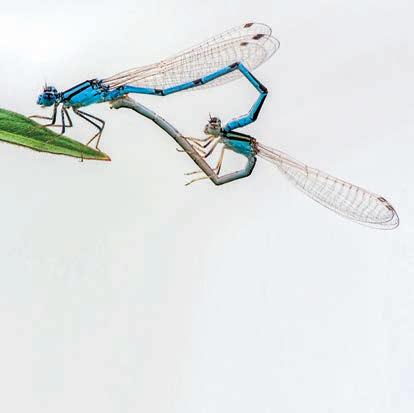
Butterflies and flies mate back-to-back. Not odonates. During mating, their slender bodies curl and join together (like these double-striped bluet damselflies) to form a heart-shaped “wheel” that’s unique among insects. They remain in this position for a few minutes or hours.
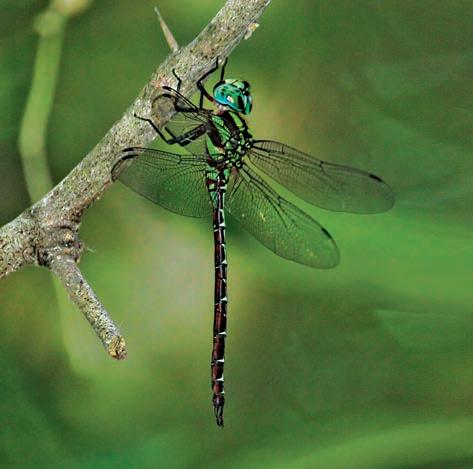
sightings and upload photos. According to the site, more than 490 odonate species occur in the U.S., and more than half (251 species) have been documented in Texas.
John Abbott, a Texas native who serves as the director of museum research and collections at the Alabama Museum of Natural History, has studied and written about dragonflies and damselflies since the early 1990s. Among his many publications, Abbott has authored Damselflies of Texas and Dragonflies of Texas, field guides published by the University of Texas Press.
In his opinion, there’s no better place than Texas to chase dragonflies.
“The state holds a unique geographic position where there’s mixing of eastern and western faunas and temperate and subtropical faunas,” Abbott explains. “This leads to the large number of odonate species that can be regularly observed in the state and tremendous opportunities for new species to be documented.”
He credits a growing number of natural history enthusiasts interested in odonates for making major contributions to what’s known about the species of Texas.
Among them are enthusiasts like Davenport and Martin Reid, a retired computer programmer from San Antonio who used to photograph mostly birds and butterflies.
“I got interested in dragonflies in 2001 when I saw a coollooking insect eating one of my butterflies,” Reid recalls. “I took a picture, and that was it. I was hooked on dragonflies.”
Since then, Reid has sought out odonates across the country as well as in Mexico, Peru, Panama, England and other distant places. But he prefers to focus on Texas species, of which he’s photographed 230.
“Whenever there’s been a new species found in the state, I dash out and try to catch up with it,” he says. “I get tips from Facebook or when someone texts me with a sighting.”
Life for dragonflies and damselflies begins in the water, where some species deposit eggs. Others insert eggs into
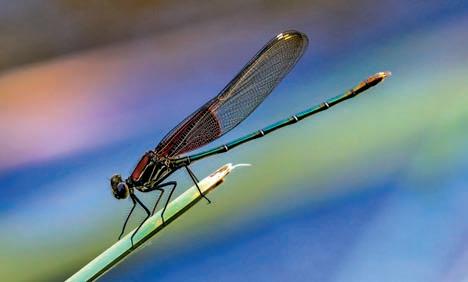

vegetation or rotting wood near water. From the eggs hatch aquatic larvae that look like big-eyed creepy crawlers. After shedding their hard skins in a series of molts, the nymphs emerge from the water and morph into winged adults.
All across Texas, adult odonates fly from spring through fall. Some occur year-round. Most adult damselflies live two to four weeks; dragonflies live four to six weeks. But some odonates survive several months.
They’re best found around freshwater, where they hunt and mate. Large open spaces, such as yards, fields and parking lots, may attract hungry odes in search of winged prey.
On their travels, Reid and Davenport have frequented the Christmas Mountains Oasis, 70 miles south of Alpine in far West Texas. Since 1996, owner Carolyn Ohl-Johnson, a member of Rio Grande Electric Cooperative, has worked to transform 5 acres of her scrubby ranchland into a lush hotspot for birds, butterflies, and, more recently, dragonflies and damselflies. So far, she has tallied 65 species.
“I remember when Tripp Davenport found a California spreadwing here,” she says. “Since then, I’ve had hundreds of them. People come here specifically to see them and Mexican amberwings.”
In Port O’Connor, on the Gulf Coast, longtime birder Petra Hockey, a member of Victoria Electric Cooperative, mostly taught herself about odonates.
Using her birding skills and Abbott’s field guides, she documented local odonate species. She’s since branched out to photograph dragonflies in the Big Bend, Pineywoods, Rio

OPPOSITE One of the first photos captured in Texas of a secretive darner dragonfly, at the National Butterfly Center in South Texas.
CLOCKWISE FROM LEFT A male checkered setwing dragonfly. A male American rubyspot damselfly, found in all but two of the lower 48 states. A male neon skimmer dragonfly.
Grande Valley and other places across Texas.
Before a trip, she always researches her destination.
“I learn what dragonfly species are there and what habitats they’re found in,” Hockey says. “What time of the day do they fly? Do they fly high or low? How do they perch? As you get more into dragonflies, you learn how interesting and unique they are.”
That uniqueness fascinates retired teacher Kerry Carloy, who lives north of Dallas in Lewisville and is a CoServ member. He frequents local natural areas in search of dragonflies. “Their intelligent design to me says they weren’t an accident,” he says. “I try to get that point across through my photos.
“They’re interesting because they can maneuver with such agility,” he adds. “They have 360-degree vision, and you can watch them crunch insects up with their teeth.”
Though he’s chased dragonflies around the world, Brian Gooding, a quality engineer who lives in Plano, doesn’t keep a life list.
“Numbers aren’t important to me,” he says. “My challenge is to take the best picture that I can, even if it’s a common species. I’ve used some of my best pictures to help educate people about dragonflies and how cool they are.”
They can also be wise. Gooding recalls the time he watched two male eastern pondhawks fighting over territory at the Colleyville Nature Center northeast of Fort Worth.
“After they were done, they went back to their respective perches and carried on with existing,” he says. “That’s when I realized I need to be more like them and let go of negative stuff in my life. It was a great lesson to learn from a dragonfly.” D

Hundreds of female pilots made history at Avenger Field, where they’re still celebrated
BY PAM LEBLANC
They had to cinch up the waistbands of their oversized, hand-medown flight suits, and they weren’t allowed to climb out of a cockpit without applying fresh lipstick. The women who trained at Avenger Field in Sweetwater stepped up in a serious way.
They volunteered when more pilots were needed to fly vital stateside missions during World War II.
The National WASP WWII Museum, which opened in 2005 in a circa 1929 hangar at Avenger Field, celebrates the Women Airforce Service Pilots, or WASPs, who trained at the remote airbase, about 40 miles west of Abilene, as part of an experimental wartime program designed to free up male pilots for combat.
“A lot were young and single and free, but some were married— and some had children,” says Lisa Taylor, executive director of the museum, located across Avenger Field from what is now Texas State Technical College, where the female trainees once lived in barracks.
“The feeling was, ‘We have this skill, and there’s a need for us.’ They adored flying and were thrilled to fly, but they were also thrilled to be needed.”
Applicants to the program, which ran for two years, had to have high school diplomas or the equivalent and be between the ages of 18 and 35, although at least one 17-year-old lied about her age to get in. They had to be at least 5 feet 4 inches tall, have a pilot’s license, and pass a physical exam and interview to get a spot.
About 25,000 women applied, and 1,830 were accepted.
They came from all 48 states and Alaska and Hawaii. They were overwhelmingly white, but there were at least two Chinese Americans, a Native American and two Latina women. The program rejected Black applicants. They were high school dropouts and debutantes, blackjack dealers and teachers. One was a pinup girl. Some had worked as crop duster pilots or barn stormers, performing stunts in traveling shows.
OPPOSITE Women Airforce Service Pilots assigned to Camp Davis in North Carolina pose in front of a Beechcraft AT-11.
BELOW The courtyard between hangars at the National WASP WWII Museum features three steel cutouts based on a historical photograph of women arriving at the base.
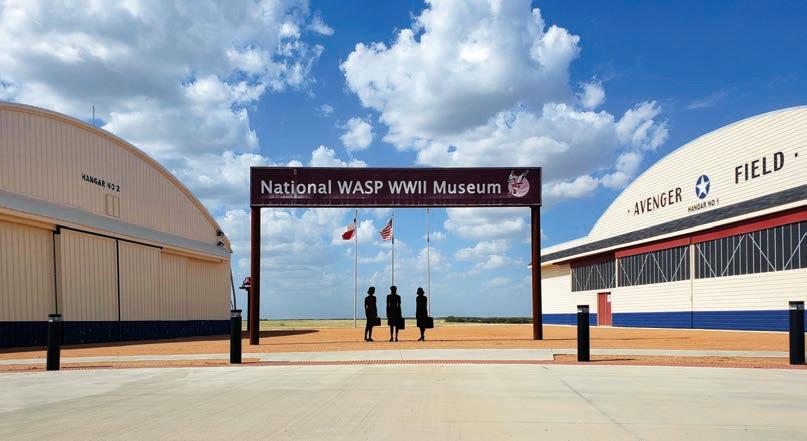
The program officially started in Houston in November 1942, under the direction of pioneering aviators Jacqueline Cochran and Nancy Harkness Love. It quickly outgrew its space in Houston and moved to Avenger Field, where the women could live in bunks in on-site barracks.
The new location worked well. The airfield had two runways plus classroom space. The sparsely populated area’s big skies and open fields suited the flight school’s needs, and the stiff West Texas wind provided ample training opportunities.
The women spent half their days in ground school, learning meteorology, navigation, first aid, military law, Morse code, mechanics and parachute packing. The rest of the working day was spent learning to fly various military aircraft.
Many of the women were small and had a hard time reaching the pedals on aircraft designed for men. They used blocks of wood and parachute packs as cushions to make it work. One bragged that she was a “three-cushion pilot,” meaning she stuffed three packs behind her back so she could operate the controls.
For their efforts, the women earned $174.50 per month (about $3,250 today), deducting $1.65 for room and board. Because they were civil workers and not officially part of the U.S. military, they even had to buy their own uniforms.
Training lasted at least seven months, and about 40% of the recruits washed out before earning their wings. But ultimately, 1,102 women completed training.
Those who graduated were assigned to air bases around the country, where they went to work shuttling military personnel
After her husband was shot down in a B-17 over Europe, Dalrymple of Llano took up flying, joined the WASPs and was soon flying B-17s herself.
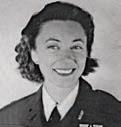

As a local who grew up just up the road from Sweetwater, in Haskell, Moore used dead reckoning—a navigational method of estimating a plane’s current position based on a previously known location, course, speed and time traveled—to ferry planes without working instruments.
Watson of San Angelo was one of just 25 women who qualified for a forerunner to the WASP program. She flew every type of plane used by the Army Air Corps
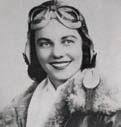

and ferrying aircraft from base to base. The WASPs flew 78 different aircraft, including pursuit planes and bombers, and flight-tested others, flying more than 60 million miles.
Some of the women served as tow pilots, dragging targets 1,000 feet behind their planes so soldiers on the ground could practice firing at them with live ammunition. Others worked as instructors or practiced concealment, learning to lay smoke that would hide personnel on the ground.
Thirty-eight WASPs were killed during their service, including 11 who died in training accidents. The military didn’t pay for their funerals, so fellow WASPs took up collections to send the women’s remains home to family.
About 14,000 people visit the museum in Sweetwater every year, exploring two hangars filled with everything from flight suits to logbooks, part of a tow target, a flight simulator, medals, parachutes and four complete aircraft of the type the women used for training.
Visitors can take a turn at a chin-up bar like one the women used during daily calisthenics or grab a seat in a re-creation of a classroom, where a film leads them through what it was like as an incoming recruit reporting for duty. They can peer into a mock-up of a room in the barracks too.
Mostly, though, visitors can learn who the WASPs were as individuals. “They’ve all got really amazing stories,” Taylor says, sharing a few as she walks through the museum.
When one group of WASPs traveled to California on a mission, they were arrested and briefly jailed for impersonating military pilots, Taylor says. Another WASP made an emergency landing in a farmer’s field, and the family who owned the land fed and housed her for the night. Other stories describe WASPs who had to parachute to safety from their airplanes and WASPs who tested aircraft with engines prone to catching fire.
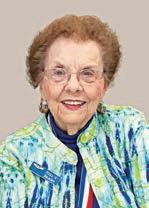
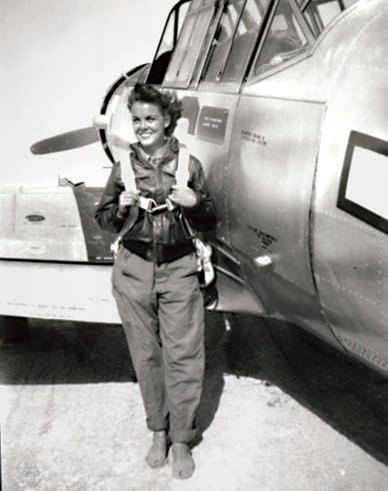
OPPOSITE A graduation ceremony August 7, 1943, at Avenger Field in Sweetwater.
ABOVE AND LEFT Nell “Mickey” Stevenson Bright, 103, knew she wanted to learn to fly when she was 8. She ended up being one of only 20 women chosen to train on B-25 bombers.
WASPs are now gone, their families, as well as members of the public, still attend.
The names of all the WASPs, including those who didn’t complete training, are listed on one wall of the museum, and visitors can access a database that includes information about each one. There are photos and handprints of many of the women.
Each April, the museum hosts a Homecoming Celebration & Fly-In, set for April 25–26 this year. While most of the
The National WASP World War II Museum will celebrate its 20th anniversary at this year’s WASP Homecoming Celebration & Fly-In, Friday–Saturday, April 25–26. There will be museum tours, guest speakers, live reenactors, aviation games and a display of aircraft. For more information, go to waspmuseum.org/ homecoming
At the 2012 homecoming, WASP Nell “Mickey” Stevenson Bright, who is now 103 years old, explained that she skipped meals as a teenager to pay for flying lessons. After becoming a WASP, she remembers standing in a shower wearing her flight suit to clean it.
“The thrill of flying those wonderful airplanes and getting paid for it—that was worth it,” Bright, who is from Canyon, said at the time.
The WASPs were deactivated in December 1944, but it took more than 30 years before President Jimmy Carter signed a bill recognizing them as military veterans. In 2010, President Barack Obama awarded the WASPs Congressional Gold Medals, the oldest and most prestigious civilian award in the U.S. Today, museum officials hope the institution can inspire the next generation.
“These women went to a lot of time and trouble to learn how to fly in a world that wasn’t going to let them in,” Taylor says. “So, what is it that you want to do and try, and what barriers will you need to overcome to leave a good legacy for yourself?” D
Tour Hangar 2 at the National WASP WWII Museum with Lisa Taylor, the museum’s director.

THERE ARE TWO WAYS to measure energy efficiency improvements. The first is the payback period. This is the amount of time that the improvement will take to pay for itself.
The second is comfort. Improvements can often increase the comfort level of a home. This is not easy to measure but is one of the driving forces behind home-weatherization efforts. There are several areas of the home that can be improved easily, without breaking your budget.
While pricey when first introduced, there has been a steady decline in the cost of LED bulbs for residential use, making them a much easier choice. LEDs save 60% or more compared to incandescent bulbs and last for several years. Care should be taken when selecting a bulb for a fixture that uses a dimmer, as not all dimmers will work with LEDs.
The Energy Information Administration estimates that heating and air conditioning account for 32% of a typical home’s annual electric bill. Options such as an air source heat pump or a ground source heat pump can be 20%–45% more efficient than
the existing heating or cooling system in the average home. However, the upfront cost is often a barrier to adoption.
Simple solutions such as changing air filters at least every two months will increase airflow to rooms, increase the life of the HVAC unit’s motor and improve the air quality of the home. Sealing and insulating ductwork can be done in a weekend and results in energy savings of up to 20% on heating and cooling costs.
It’s important to find and seal air leaks. To do so, walk around your house on a cold day and feel for drafts around exterior doors and windows, electrical outlets, and entrance points for cables. To seal leaks, apply caulk, weatherstripping or spray foam.
Simple acts such as cooking outdoors on a hot summer day or keeping curtains closed to keep out the sun can reduce the time AC units need to operate.
The appliances and gadgets that make life easier are also some of the largest users of electricity in our homes. When buying a new appliance, look for the Energy Star label. That choice can result in 10%–15% savings in energy consumption.
You can save on the purchase of those appliances by taking advantage of Texas’ Energy Star holiday. Sales taxes are waived May 24–26 on the purchase of certain Energy Star appliances. Here are some simple household tips to help trim your electric bill.
Cleaning lint traps on dryers and not overdrying clothes will save energy and extend the life of your clothes.
Replacing worn refrigerator door gaskets will stop cool air from escaping the refrigerator.
Home electronics, like computers, TVs and game systems, consume power even when turned off. This is known as a parasitic load or by the more playful term “energy vampires.”
Turning off power to these vampires by using a power strip or a smart strip is the best way to stop this senseless loss of energy. The best energy efficiency improvements are often the easiest. Turning lights off when leaving a room, sealing windows and doors, and opening or closing curtains isn’t as much fun as buying a shiny new appliance. But these tasks are proven ways to save energy and increase comfort on a budget. D

At NEC, we are more than just employees — we are a family, united by a shared commitment to service.
April is a month to appreciate and celebrate our employees, and at Nueces Electric Cooperative, we rely on a dedicated team to keep our community running. On April 14, we honor Lineworker Appreciation Day, and on April 23, we recognize Administrative Professionals Day. These special days allow us to thank those who work hard, both in the field and behind the scenes, to ensure reliable service for our members.
The Front Lines: Lineworkers Line work ranks as one of the most dangerous jobs in the country. The crews at NEC work in often-challenging conditions, restoring power in rain, wind, and extreme temperatures. Their work requires intense focus, as they operate around high-voltage electricity with no margin for error.
Becoming a lineworker takes years of training. They start as groundmen, transition to apprenticeships, and log over 8,000 hours before achieving journeyman status. Even then, learning never stops. They continue training to stay up to date on the latest safety practices and technology.
Their sacrifices are great. Lineworkers answer calls at all hours, sometimes missing family moments to restore power after storms or accidents. But despite the challenges, the pride of seeing a home light up after an outage makes the job worthwhile.
Backbone: Administrative Professionals
While lineworkers restore power, administrative professionals keep the cooperative
running. From billing and member services to operations and logistics, these professionals ensure seamless communication, financial accuracy, and efficient scheduling.
Their work is often behind the scenes, but its impact is everywhere. They handle the details that keep crews safe and equipped, support members with account management, and coordinate projects that improve service reliability. Just like lineworkers, they work under pressure—whether responding to an outage call or implementing new technology to better serve our members.
Their dedication ensures that Nueces Electric Cooperative operates smoothly, supporting both our teams and our community.
One Team, One Mission
At NEC, we are more than just employees—we are a family, united by a shared commitment to service. Whether climbing poles or balancing budgets, our team works together to keep the lights on and our cooperative strong.
On this special day, we recognize and appreciate the hard work, dedication, and sacrifices of both our lineworkers and administrative professionals. Because at the end of the day, it takes all of us to power our community.

Varzavand "Avan" Irani Chief Executive Officer



Starting university is exciting—a new chapter filled with classes, friends, and independence. But with that independence comes new responsibilities, including managing your energy usage. Practicing energy efficiency can help you save money, reduce your environmental footprint, and develop good habits for the future. Here are some simple ways to get started:
1. Be Smart with Electronics: Laptops, phones, and gaming consoles are essential for student life but can drain power if left plugged in. Use a power strip and turn it off when your devices aren’t charging. Better yet, unplug chargers when not in use— they draw power even when idle.
2. Embrace Natural Light:
If your dorm or apartment has windows, take advantage of natural light during the day. It’s easier on your eyes and reduces the need for artificial lighting.
3. Upgrade to LED Bulbs:
If you’re allowed to change light bulbs in your room, switch to energy-efficient LEDs. They use less energy and last longer than traditional bulbs.
4. Watch Your Heating and Cooling: Heating and cooling costs can sneak up on you. Dress for the weather inside—wear layers during colder months and use fans instead of cranking up the AC. If you have control over your thermostat, set it to a comfortable but efficient temperature.
5. Use Appliances Wisely: When doing laundry, wash full loads with cold water to save both energy and water. Air-dry clothes when possible. If you use a mini-fridge or microwave, keep them clean and well-maintained for optimal efficiency.
6. Limit Water Waste:
Shorter showers and turning off the tap while brushing your teeth can cut both water and energy usage. Hot water takes energy to produce, so conserving it helps your utility bill and the planet.
7. Rethink Transportation:
Walk, bike, or use public transportation whenever possible. It’s cheaper, healthier, and more environmentally friendly than driving.
Starting university is the perfect time to build energy-conscious habits. Small changes can lead to significant savings, letting you focus on what really matters—your studies and campus life!

Earth Day is one of the world’s largest civic events, and on April 22, we can all be part of this global movement to help the environment.
There are many ways we as individuals can improve the environment, and some are easier than you’d think. Here are a few simple actions you can take now to reduce your energy use.
Audit your light bulbs. Swapping out incandescent bulbs with LEDs can make a big difference in home efficiency, and it’s one of the easiest ways to reduce your energy bill.
Maintain your HVAC system. Replace your home air filters to allow your HVAC system to run efficiently. Air filters prevent dust and allergens from clogging your HVAC system. Changing the filters makes your unit run more efficiently—keeping your home cooler in the summer and warmer in the winter.
Examine your smart or programmable thermostat. Make sure it’s programmed for the current season and family schedule. Your thermostat is one of the best tools at your fingertips; however, you can only achieve these efficiencies and savings if it’s programmed properly and adjusted periodically to keep pace with changes in household routines.
Seal windows and doors. Seal leaks with weatherstripping and caulk to keep cool air indoors during warm months and prevent cold air from penetrating the indoors during colder months. Sealing gaps around piping, dryer vents, fans and outlets also helps to seal the envelope and increase efficiency.
As we celebrate Earth Day, let’s continue to work together and make a positive impact on our local community—and our beautiful planet.

April 14
Sunday, April 20
Day Tuesday, April 22
Professional's Day Wednesday, April 23
Nothing spoils a fun Easter egg hunt like an accident, so keep these safety tips in mind. If you’re using real eggs, buy them just a few days before Easter. Keep them refrigerated until you’re ready to boil, cool them before dyeing, and discard any that are cracked. Make sure to hide real eggs no more than an hour before the hunt, and don’t leave them unrefrigerated for more than two hours to avoid the risk of bacteria.
Most egg hunts use plastic eggs, but safety still matters when choosing hiding spots. Indoors, keep eggs away from outlets, plugs, light sockets, and extension cords. Place them at table height or lower to prevent kids from climbing. Outdoors, steer clear of hiding eggs near air conditioning units, overhead wires, or trees close to power lines. Fill in holes, clear away tripping hazards, and keep eggs well within your yard—away from streets and driveways. Bushes can be tempting hiding spots but check for bees, snakes, or other critters, and avoid those with thorns or recent pesticide treatments. To prevent a surprise rottenegg discovery later, make a list of where you’ve hidden real eggs. Your nose—and your yard—will thank you!


When it comes to fire safety, being cautious and prepared is key to preventing accidents and protecting both property and lives. Whether you're burning yard waste, using lighting or heating devices, or handling cigarettes, following proper safety protocols is essential. By taking a few simple yet important precautions, you can minimize the risk of a fire getting out of control. The following tips will guide you through best practices for fire safety, from ensuring fires are fully extinguished to safely managing heating appliances and outdoor fires. Always prioritize safety, and remember that being proactive can make a significant difference in preventing disasters.

Never leave a fire unattended, and make sure you completely extinguish the fire when you’re done. Drench it with water and stir the ashes
When burning yard waste, follow local ordinances. Avoid burning in windy conditions, and keep a shovel, water and fire retardant nearby to keep fires in check.
Play it safe when using fueled lanterns, heaters and stoves. Lighting and heating devices should be cool before refueling. Keep flammable liquids and fuel away from appliances.
Never discard cigarettes, matches and smoking materials from moving vehicles or any where on park grounds. Com pletely extinguish cigarettes before disposing of them.






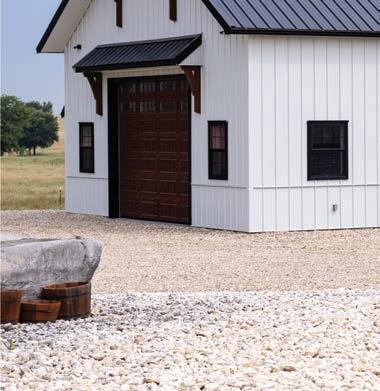








BY KEVIN ROBBINS • ILLUSTRATION BY ERIC KITTELBERGER
LEE ELDER WAS 40 when he played in his first Masters Tournament, the spring golf ritual in Augusta, Georgia, that represents the first of the four major championships each season. But his rather advanced age wasn’t the story at all 50 years ago this month—in April 1975. Nor were the death threats.
The Dallas native had become the first African American to compete in the Masters. Augusta National Golf Club, which organizes and hosts the tournament, had finally responded to the civil rights movement of the 1960s. While the club had no formal policy banning Black players, it nonetheless had never extended an invitation to one.
That changed in 1971.
That year, the Masters announced that
any player who had won the previous season on the PGA Tour would automatically qualify—a policy that exists to this day.
Elder won the 1974 Monsanto Open in Pensacola, Florida. It was two weeks after Hank Aaron broke the Major League Baseball home run record set by Babe Ruth.
Elder’s acceptance to play in the Masters generated massive publicity. It felt like a watershed moment in American sports.
“Move over, Hank Aaron,” wrote The Chicago Defender, a Black newspaper. “There’s enough room in the spotlight for at least two people.” The threats soon followed.
In April, as the Masters neared, Elder rented two houses near the course for himself and his wife. He wanted no one
else to know where he would be while competing.
It was all so new and unnerving to the U.S. Army veteran who, along with his nine siblings, had lost his parents when he was young. Born in 1934, Elder caddied with his brother Raymond at Tenison Park Golf Course in Dallas, miles from the nearest course that allowed Black players. He moved to California in the 1940s to live with an aunt.
There he caddied, toiled in bag rooms, did odd jobs in pro shops and gradually learned to hit a golf ball straight and far.
Elder joined the United Golfers Association, a tour for Black players, who were, at the time, excluded by fiat from the PGA Tour.
Elder thrived on the UGA. He won 18 of 22 tournaments in one remarkable stretch. But that wasn’t where the money and prestige were; UGA purses were a pittance. Elder joined the PGA Tour in 1968, seven years after it lifted its Caucasian-only policy.
That August, he took the mighty Jack Nicklaus to a playoff in Akron, Ohio. Elder had arrived. People knew his name.
He eventually won four tournaments in 448 starts on the PGA Tour, including once in Texas, at the 1976 Houston Open. He proved, with Charlie Sifford and Calvin Peete, that Black players belonged in professional golf.
Elder missed the 36-hole cut at that Masters (a tournament he would play five more times) in his 1975 debut. He later said he felt seen in a way he never had.
“The display from the employees at Augusta National was especially moving,” Elder, who died in 2021, told Golf Digest in 2019. “Most of the staff was Black, and on Friday, they left their duties to line the 18th fairway as I walked toward the green.
“I couldn’t hold back the tears. Of all the acknowledgments of what I had accomplished by getting there, this one meant the most.” D
Hearty meals that just might be too good to limit to breakfast
BY VIANNEY RODRIGUEZ, FOOD EDITOR
Team salsa verde! I unapologetically drench salsa verde over all my dishes, but over eggs in a well of hash browns topped with bacon? This is what breakfast dreams are made of. Take this directly from the stovetop to the table and serve it family style.

Salsa Verde, Hash Brown & Bacon Breakfast Skillet
6 strips bacon, diced
6 cups frozen diced hash browns
¾ cup chopped red bell pepper
¾ cup chopped green bell pepper
½ cup chopped onion
1 teaspoon salt
¼ teaspoon ground black pepper
4 eggs
1 cup salsa verde ¼ cup chopped cilantro (optional)
1. In a large skillet over medium heat, cook bacon until crisp. Remove bacon and set aside. Drain, reserving 2 tablespoons of drippings in skillet.
2. Add hash browns, peppers, onion, salt and pepper to drippings. Cook 2 minutes while stirring.
3. Cover and cook about 15 minutes more or until potatoes are browned and tender, stirring occasionally.
4. Reduce heat to low. Make 4 wells in potato mixture. Break 1 egg into each well. Top each egg with ¼ cup salsa verde.
5. Sprinkle bacon over the top, cover, and cook until eggs are completely set, about 8–10 minutes.
6. Serve warm, garnished with cilantro if desired.
SE RVES 4
Follow Vianney Rodriguez as she cooks in Cocina Gris at sweetlifebake.com, where she features a recipe for Honey Flan.

MICHELE BRADLEY
GRAYSON-COLLIN EC
If you crave an easy, sticks-to-your-bones breakfast, this one has it all—veggies, sausage, eggs, cheese and a hint of spice. Served warm with a few slices of creamy avocado, this dish will keep you going all morning.
4 tablespoons extra-virgin olive oil, plus more as needed
1 small potato, diced
½ cup ground pork or turkey breakfast sausage
½ cup diced green bell pepper
½ cup diced red bell pepper
½ cup diced yellow bell pepper
¼ cup thinly sliced portabello mushrooms
2 tablespoons minced garlic
8 eggs
2 tablespoons cottage cheese
1 tablespoon Cajun seasoning
½ teaspoon crushed red pepper flakes
Sliced avocado
1. Heat oil in a large skillet over mediumhigh heat. Add diced potato and sausage. Cook, stirring occasionally, until sausage is cooked through and potato is fork-tender.
2. Stir in peppers, mushrooms and garlic, and cook until vegetables are slightly tender, adding additional oil if needed. Remove from skillet and set aside.
3. In a bowl, beat eggs lightly. Add cottage cheese, Cajun seasoning and crushed red pepper flakes.
4. Pour egg mixture into skillet over mediumhigh heat. Run spoon across bottom of skillet to begin lightly scrambling eggs.
CONTINUED ON PAGE 28 >


Stuffing in a breakfast casserole? This recipe piqued my interest from the start, and boy was I happy I gave it a try. The stuffing addition gives this eggy dish a mouthful of flavor and bite. This casserole will feed a crowd, but you could also keep it for yourself and enjoy it for lunch all week.
9 eggs
3 cups milk
1 box stuffing mix (6 ounces), any flavor
1 pound ground breakfast sausage, cooked and crumbled
3 cups grated cheddar cheese, divided use
1. Coat a 9-by-13-inch baking dish with cooking spray.
2. In a large bowl, lightly beat eggs. Add milk, stuffing, sausage and 2 cups cheese. Stir to combine.
3. Spoon into prepared dish and top with remaining 1 cup cheese.
4. Cover with plastic wrap or aluminum foil and refrigerate overnight.
5. In the morning, allow casserole to sit at room temperature 30 minutes while the oven preheats to 350 degrees.
6. Bake uncovered 40–45 minutes or until lightly browned on top and toothpick inserted comes out clean.
SERVES 12–16
ONE-SKILLET DINNERS DUE APRIL 10
It’s a busy weeknight, and you need an easy one-dish dinner to fill up the family. What’s your go-to? Send us your best skillet stunner, and you could win $500. Enter by April 10.
UPCOMING: CANDIES AND FUDGE DUE MAY 10
RECIPES CONTINUED
5. Stir in cooked potato, sausage and vegetables to evenly coat with egg. Continue to cook until eggs are fully cooked.
6. Serve warm, topped with avocado.
SERVES 3–4
AMY STREET
MIDSOUTH EC
This egg bake packs all the flavors of a breakfast sandwich into a casserole. I love finding great recipes to have on hand for a lazy Sunday morning brunch with ingredients I have readily available in my kitchen. Fresh from the oven, I topped my slice with plenty of hot sauce—delicious!
1 tube crescent rolls (12 ounces)
1 pound pork breakfast sausage

½ cup diced green onion
8 eggs
1 cup milk
1 teaspoon salt
½ teaspoon ground black pepper
1 cup shredded cheddar cheese, divided use
1 cup shredded mozzarella cheese, divided use


1. Preheat oven to 400 degrees. Coat a 9-by-13-inch baking dish with cooking spray. Line crescent rolls along the bottom, pinching seams to seal. Bake 8 minutes, then remove from oven.
2. While crust is baking, cook breakfast sausage in a skillet over medium-high heat, breaking up with a spoon. Add green onion and continue to cook, stirring occasionally, until sausage is fully cooked. Remove from heat.
3. Reduce oven temperature to 350 degrees. Add eggs, milk, salt and pepper to a bowl. Whisk until thoroughly combined.
4. Spread sausage mixture over cooked crescent crust. Sprinkle half the cheddar and mozzarella over sausage. Pour egg mixture evenly over cheese and then sprinkle on remaining half of cheeses.
5. Bake 30 minutes or until top is lightly browned and toothpick inserted comes out clean.
SERVES 12




















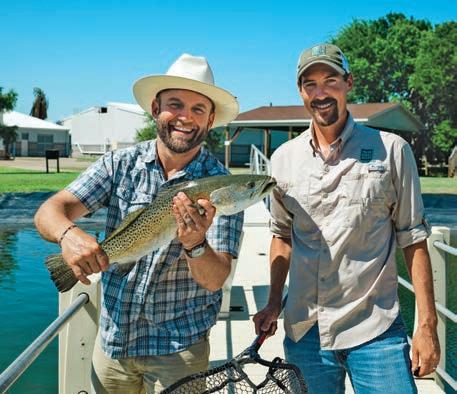
For millions of fish, life starts at Sea Center Texas
BY CHET GARNER
MANY TEXANS WILL spend their entire lives chasing the big one on the Gulf Coast. They’ll traverse marshes and bays in search of a bull red or spec worthy of hanging on the wall or, perhaps more importantly, posting on social media.
I’ve spent my share of afternoons casting but have never had half as much luck as I did in 10 minutes fishing the ponds outside Sea Center Texas in Lake Jackson, about an hour south of Houston. That’s because many of the redfish and speckled trout in our state started their lives right here.
Sea Center Texas is an aquarium, science lab and fish nursery. It’s where the Texas Parks and Wildlife Department breeds fish to populate our waters and educates the public on all the amazing creatures of our coast.
What immediately impressed me wasn’t the live fish but the replicas of state-record saltwater fish covering the lobby walls. Let’s just say the great hammerhead specimen still gives me nightmares.
I walked the halls of aquariums, each focusing on a different underwater ecosystem, from coastal marshes to deeper offshore waters. There was even a touch tank where I held a blue crab (pincers removed, thankfully).
I then grabbed a tour of the back-of-house where TPWD biologists raise millions (literally) of reds, trout and flounder. Outside is a wetlands boardwalk and 75 acres of tanks, including some open for public youth fishing. Luckily I had my kids in tow and was able to reel in a speckled trout much bigger than anything I’ve ever caught before. But, hey, I’ll count it.
It’s just one of the many reasons to plan a trip here instead of chasing the big ones all around the coast. D
ABOVE Chet and Paul Cason, director of Sea Center Texas, with a speckled trout.
Watch the video on our website and see all Chet’s Texplorations on The Daytripper on PBS.
Call ahead or check an event’s website for scheduling details, and check our website for many more upcoming events.
11
Carthage [11–12] Piney Woods Quilt Festival, (903) 754-1948, carthagetexas.com
12
19
Aubrey GreenFest on the Greenbelt, greenfestdenton.com
Lake Jackson Kids Reel Big Fish Event, (979) 297-4533, lakejacksontx.gov
McKinney [12–13] Spring Native Plant Sale, (972) 5625566, heardmuseum.org
Fairfield Easter Eggstravaganza, (903) 389-5792, fairfieldtexaschamber.com
23
25
26
Corsicana [23–26] Derrick Days, (903) 654-4850, derrickdays.com
Burnet [25–26] Highland Lakes Quilt Festival, hlqguild@gmail.com, hlqg.org
Burton Cotton Gin Festival, (979) 289-3378, texascottonginmuseum.org
Castroville Alsatian Festival of Texas, castrovilletx.gov
Channing Hogs at the Point, (806) 935-5598, talonpoint.org
Fredericksburg Volunteer Fire Department Fish Fry, (830) 997-7521, fbgtx.org
Huntington Homestead Festival, shophuntingtontx .com






Taylor [2–3] Chisholm Trail Quilt Guild Quilt Show, ctquiltguild.org
El Campo Cinco de Mayo Celebration, (979) 275-1600, eclostlagoon.com
Fairfield Lemonade Day, (903) 389-5792, fairfieldtexaschamber.com
New Ulm Honey Bee Jubilee, (713) 568-5584, newulmtexas.org
San Marcos Heritage Home Tour, (512) 392-4295, heritagesanmarcos.org
Comfort [3–4] Hill Country Two-Step, texasminimilkers .org




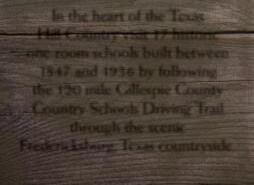











Not only are these hefty bars one full Troy ounce of real, .999 precious silver, they’re also beautiful, featuring the crisp image of a Morgan Silver Dollar struck onto the surface. That collectible image adds interest and makes these Silver Bars even more desirable. Minted in the U.S.A. from shimmering American silver, these one-ounce 99.9% fine silver bars are a great alternative to one-ounce silver coins or rounds. Plus, they offer great savings compared to other bullion options like one-ounce sovereign silver coins. Take advantage of our special offer for new customers only and save $10.00 off our regular prices.
What makes them iconic? The Morgan Silver Dollar is the legendary coin that built the Wild West. It exemplifies the American spirit like few other coins, and was created using silver mined from the famous Comstock Lode in Nevada. In fact, when travelers approached the mountains around the boomtown of Virginia City, Nevada in the 1850s, they were startled to see the hills shining in the sunlight like a mirror. A mirage caused by weary eyes?



No, rather the effect came from tiny flecks of silver glinting in the sun.















While no one can predict the future value of silver in an uncertain economy, many Americans are rushing to get their hands on as much silver as possible, putting it away for themselves and their loved ones. You’ll enjoy owning these Silver Bars. They’re tangible. They feel good when you hold them, You’ll relish the design and thinking about all it represents. These Morgan Design One-Ounce Bars make appreciated gifts for birthdays, anniversaries and graduations, creating a legacy sure to be cherished for a lifetime.
You can save $10.00 off our regular price when you buy now. There is a limit of 25 Bars per customer, which means with this special offer, you can save up to $250.
Call right now to secure your .999 fine silver Morgan Design One-Ounce Silver Bars. You’ll be glad you did.




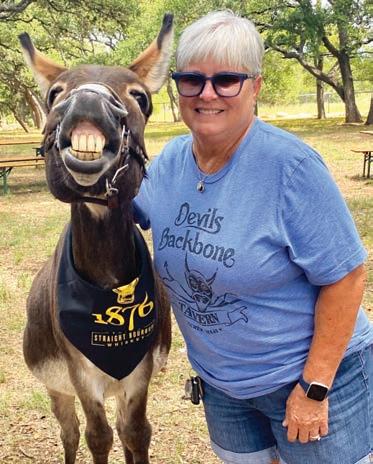
DUE APR 10 College Life
DUE MAY 10 Off-Road Adventures
DUE JUN 10 Heroes
Enter online at TexasCoopPower.com/contests.
See Focus on Texas on our website for many more Characters photos from readers.
Whether your friends be of a feather or the four-legged variety, they bring a unique flavor to life in Texas. As these photos attest, being true to oneself is joyful.
CURATED BY GRACE FULTZ
1 THERESA MCKEE FANNIN EC
“This guy has been iconic over the years. He truly is a Texas character!”
2 PAUL GARCIA MEDINA EC
“It took me forever to get this shot. I had about 10 hummingbirds at my feeder and had an idea about trying to hand-feed them.”
3 MARY CARUTH PEDERNALES EC Cheese! This was taken at Dripping Springs Distilling.
4 AMY SAYLAK BRYAN TEXAS UTILITIES
“A Texas girl with her first cap gun, Sneaky Pete!”
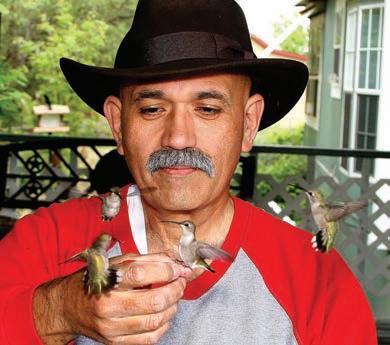

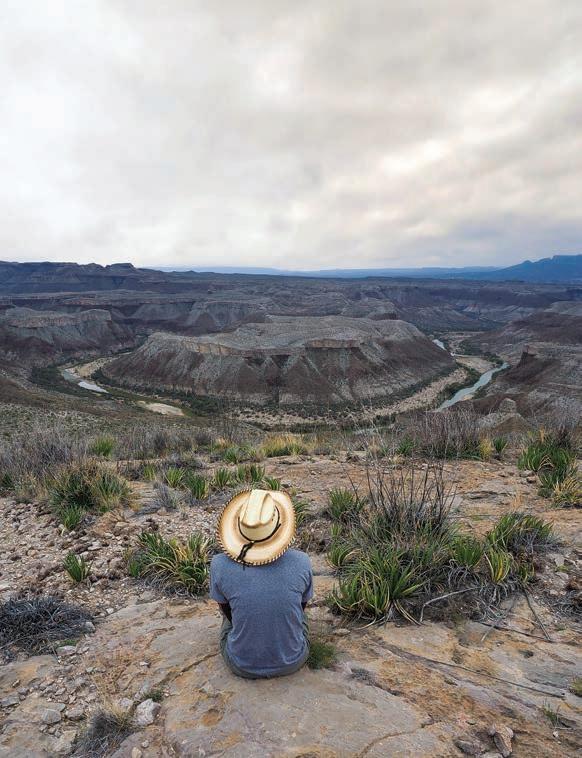
packing trip down the spine of the mesa. Now I make a much easier 2.5-mile jaunt to reach the overlook.
Here, the desert closes in for a prickly hug. With its shattered rocks and cactuses that look like bouquets of steak knives, this remote spot feels like the backdrop of an old Star Trek episode.
You’ve probably seen photographs of Horseshoe Bend at the Glen Canyon National Recreation Area in Arizona, where Instagrammers famously flock to snap photos of themselves high above a U-shaped section of the Colorado River. This, to me, is the Texas equivalent.
To get here from the park’s west entrance, drive 21 miles west along FM 170 to Lajitas. The Mesa de Anguila Trail starts behind the Lajitas Golf Resort, next to a sign that says, “Poisonous snakes and insects may be present.”
The first mile and a half of the trail zigzag through flat desert, dipping into shallow arroyos and winding past scrub. There is no shade; bring plenty of water, even in winter.
After about 30 minutes plodding through the desert, the trail starts to climb up a rocky gully. You’ll get a quadburning workout as you ascend 600 feet over half a mile. You might need to use your hands as you clamber over rocks as big as armchairs and tiptoe through spillways of scree.
BY PAM LEBLANC
BY CHRIS LEBLANC
FROM MY VANTAGE point on the side of a rocky slope high above the Rio Grande, the river looks like a glinting horseshoe far below.
I think it’s the best view in the Big Bend region, and that’s saying a lot. I’ve spent hours gazing down at the rippling desert floor from the South Rim, watching the sun sink behind the Window in the Chisos Basin and peering upriver at Santa Elena Canyon.
But this view, from the western edge of Mesa de Anguila, surpasses all of those, and few hikers make the trip. The mesa, an 11-mile hump of land that juts like a broken pinkie off the western side of Big Bend National Park, is one of the least-visited areas of the park.
I first discovered the overlook six years ago, during a challenging multiday back-
When you reach the saddle at the top, just past the 2-mile point, the main trail continues straight. Instead of following that path, look for a faint trail to your right. Make your way up the hill, then look south, toward Mexico.
Voilà.
Find a good boulder to sit on, and take it in. I could sit for hours, contemplating the way the river embraces the land.
They say horseshoes bring good luck. In this case, I’m sure it does. Anyone who makes it to this spot is lucky to take in such a beautiful view. D





















You may think you know what“priceless” means—usually, it just means “astronomically expensive.” But not at Stauer. Priceless means FREE.
Stauer is smashing luxury norms with our FREE 77-Carat Durango Howlite Necklace. at’s right—zero dollars.* is genuine howlite piece, valued at $299, is yours for FREE—just cover $24.70 for shipping and processing. Plus, we’ll send a $25 Discount Coupon, making shipping Better an Free! No tricks, no obligation—though resisting our luxury deals won’t be easy.


Why give away jewelry? Because once you see Stauer’s rare gemstones and vintage-inspired watches, we know you’ll fall in love. If not, keep your FREE necklace—no hard feelings.
Howlite, discovered in Nova Scotia, has been a gemologist’s secret, often compared to turquoise. Our Durango Collection channels classic Southwest jewelry, featuring blue-green beauty in oxidized silver settings. Get nearly 160 carats for just $79!
is deal won’t last—we only have 2,500 left. Call now to claim your FREE necklace and experience a new kind of priceless luxury!
Jewelry Speci cations:
• Enhanced howlite.
• Oxidized silver finish.





• Necklace: 23" + 2", lobster clasp.
• Earrings: 3" drop, French wire.
• Bracelet: 7", elastic.
Durango Collection— Call In Only
A. Necklace (77 ctw) $299 FREE* + S&P




